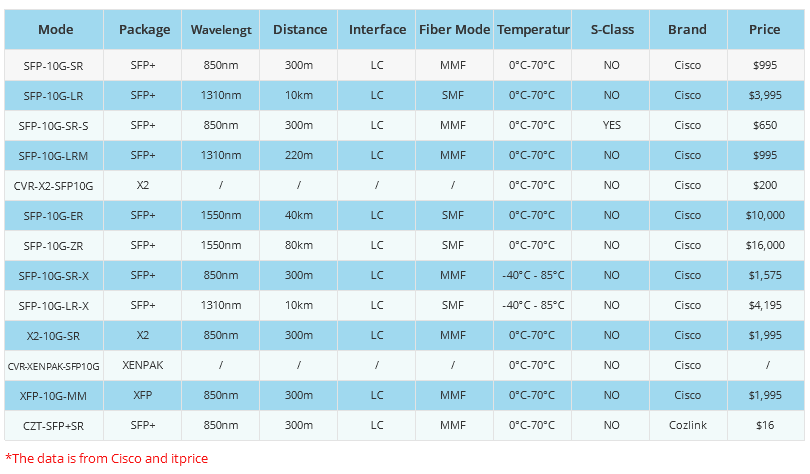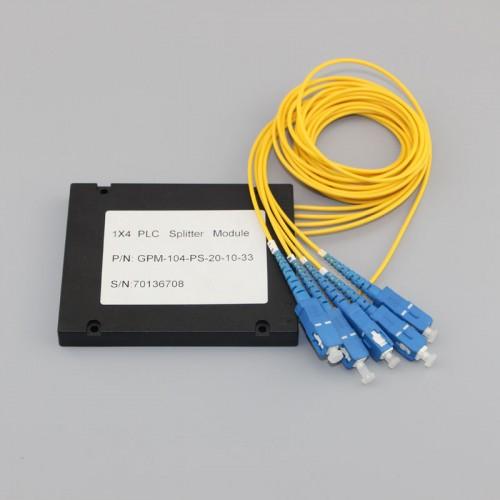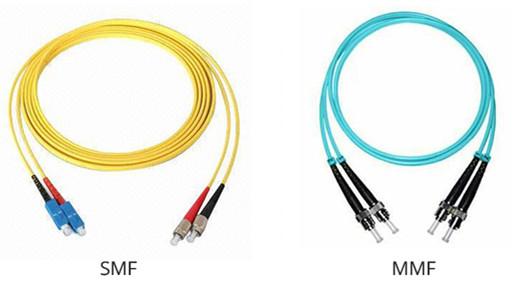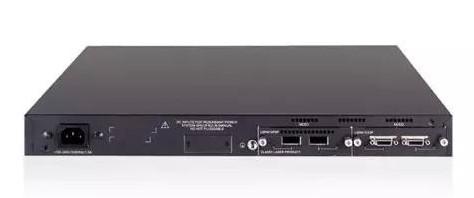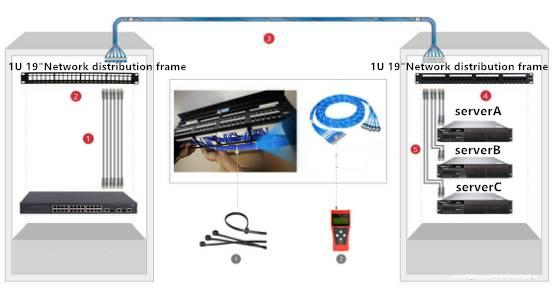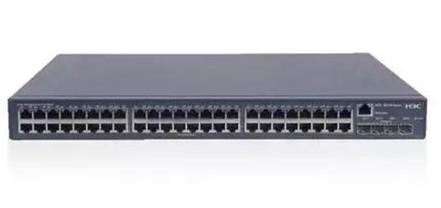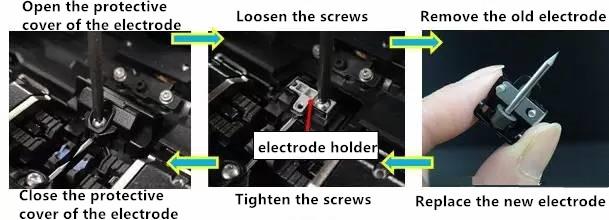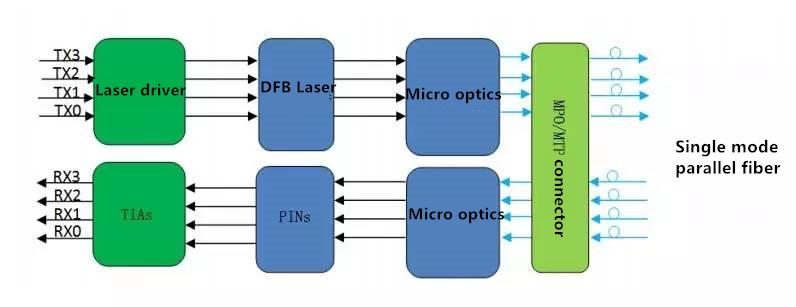- Related articles
- EoS & EoL Announcement for the Cisco FourX CFP to Four SFP+ Converter Module
- Cozlink Supply The Cisco X2 Transceivers Function And Compatibility
- All Cisco XFP-10GZR-OC192LR’s Information (Overview, Features, Datasheet PDF, Price, Speci
- Optical Transceivers for Cisco WS-C3650-24TS-E Switch
- All Cisco DWDM-XENPAK-58.98's information (List price, Specs, Datasheet PDF, Compatibility
- Used in 10GBASE-ZR Standard Optical Transceiver Models
- All Cisco QSFP-40G-LR4-S’s Information (Overview, Features, Datasheet PDF, Price, Specific
- All Cisco ONS-SC+-10G-ER's information (List price, Specs, Datasheet PDF, Compatibility ma
- The difference between integrated network card and external network card
- Applicable to 1000BASE-BX-U Standard Optical Transceiver Models
Recommend tag
What is a 40G QSFP+optical module?
2024-12-03

1、 Concept
40G QSFP+optical moduleThe 40G QSFP+optical module is a four channel small pluggable optical module with a transmission rate of 40Gbps, which can achieve interconnection between network devices (such as switches, routers, media converters, etc.) and optical or copper cables. Its structure is more compact than CFP optical modules, making it more suitable for applications with high port density.
2、 Classification
40G QSFP+optical moduleThe commonly used 40G QSFP+optical modules can be divided into 40GBASE-SR4 optical module, 40GBASE-LR4 optical module, 40GBASE-ER4 optical module, and 40G LR4 PSM optical module.
| Type | Package type | Wavelength(nm) | Transmission distance | Connector |
| 40G BASE-SR4 | QSFP+ | 850 | 100m/150m | MPO |
| 40GBASE-SR-BiDi | QSFP+ | 850/900 | 100m/150m | LC |
| 40G BASE-CSR4 | QSFP+ | 850 | 300m/400m | MPO |
| 40G BASE-PSM4 | QSFP+ | 1310 | 2km/10km | MPO |
| 40G BASE-LR4 | QSFP+ | CWDM | 10km | LC |
| 40G BASE-ER4 | QSFP+ | CWDM | 40km | LC |
Application of 40G QSFP+Optical Module
The interface of the 40G SR4 QSFP+optical module is MPO/MTP, with 4 independent full duplex channels. It is commonly used with multimode fiber and has a transmission distance of 100m when used with OM3 fiber jumpers and 150m when used with OM4 fiber jumpers.Unlike traditional 40G QSFP+optical modules, the 40GBASE-SR BiDi QSFP optical module only has two 20Gbps transceiver channels, each of which can simultaneously transmit and receive optical signals of different wavelengths from a multimode fiber. Therefore, the 40GBASE-SR BiDi QSFP optical module can be combined with duplex multimode fiber jumpers to form a 40G fiber link. It should be noted that 40GBASE-SR BiDi QSFP optical modules must be used in pairs.
40GBASE-CSR4, also known as QSFP-40G-CSR4, is an extended version of 40GBASE-SR4. It uses MTP/MPO interfaces and can be transmitted over distances of up to 300m/400m when paired with OM3/OM4 fibers, complying with the IEEE 802.3ba standard.
The interface of the 40G LR4 PSM optical module is MPO/MTP, which adopts Parallel Single Mode (PSM) technology and utilizes four parallel designed MPO/MTP interfaces with a transmission distance of 10km. It has the characteristics of high port density and low cost.
The interface of the 40G LR4 QSFP+optical module is LC duplex, which has the advantages of high density, high speed, large capacity, low cost, and low power consumption. It is generally used together with LC single-mode fiber jumpers, and the maximum transmission distance can reach 10km.
The 40G ER4 QSFP+optical module, like the 40G LR4 QSFP+optical module, is generally used with LC single-mode fiber. The difference is that the 40G ER4 QSFP+optical module converts four 10G data input channels into four CWDM optical signal channels, each with a speed of up to 11.2Gbps, and multiplex them into a single channel for 40G optical transmission. It is mainly used in 40GBASE-ER4 Ethernet links, Infiniband QDR and DDR interconnects, and client 40G telecommunications connections.
3、 Characteristics
40G QSFP+optical module:- 3.1. Adopting semiconductor packaging technology, with 4 built-in lasers and detectors, it can support customers' high-density single board needs.
- 3.2. When bandwidth needs to be increased, network operators can add new QSFP+optical modules without interrupting network services.
- 3.3. The power consumption is less than 3.5W, while the old CFP module has a power consumption of 8W.
- 3.4. In client fiber optic transmission applications for enterprise networks, LANs, SANs, and telecommunications networks, the transmission distance can reach up to 10km.
4、 Technical background of 40G optical module
With the advent of cloud computing and big data era, networks are forced to develop towards high speed and high density, while the utilization rate of virtualized servers is increasing. In order to provide sufficient I/O (input/output) bandwidth, many new access switches have evolved to 2 or 4-port 40G Ethernet that can connect to core switches. The rapid development of interconnected data transmission cannot be separated from 40G QSFP+optical modules, as they can provide sufficient bandwidth to ensure unobstructed data conversion and meet the network needs of data centers and enterprise campuses.5、 Advantages of 40G QSFP+optical module
The 40G QSFP optical module can transmit data at a speed of 10Gbps per channel with the same port volume as the matched XFP optical module, and supports four channels of data transmission when matched. Therefore, the density of the 40G QSFP optical module can be four times that of the XFP optical module and three times that of the SFP+optical module.6、 40G QSFP+Optical Module Interface Specification
QSFP+was born to meet the demand for high-density and high-speed plug-in solutions in the market. As one of the most common packaging forms, the 40GQSFP+optical module outperforms the 4-channel CX4 interface in both speed and density. The two basic interface specifications for QSFP+optical modules are 40GBASE-SR4 and 40GBASE-LR4. The former is used in multi-mode applications, while the latter is used in single-mode applications.The optical module complies with the 802.3ba (40GBASE-LR4) standard and can be used with LC fiber connectors to achieve a transmission rate of up to 40Gbps. This optical module has 4 data transmission channels, each with a transmission rate of approximately 10.3125Gbps. Simultaneous transmission of data through 4 channels can achieve 40Gbps transmission. The 40GBASE-LR4 QSFP+optical module is typically used between data centers and internet exchange points, in conjunction with single-mode fiber, with a transmission distance of up to 10km.
The optical module complies with the 802.3ba D3.2 (40GBASE-SR4) standard and can achieve 40Gbps optical connection when used with MPO/MTP fiber optic connectors. This type of optical module also transmits through four channels, with the same transmission rate as LR4. In data centers, 40GBASE-SR4 QSFP+optical modules can be used with multimode OM3/OM4 fiber to achieve 100m (OM3) and 150m (OM4) transmission, enabling interconnection between two Ethernet switches.
7、 How to choose 40G QSFP+optical module
40G SR4, 40G eSR4, and 40G BIDI are multi-mode optical modules that require the use of OM3/OM4 fiber jumpers for transmission. Due to their short transmission distance, they are suitable for interconnecting equipment within data centers; The interface types of 40G SR4, 40G eSR4, and 40G PSM4 are all MPO interfaces. This type of interface can not only connect 40G links, but also use MPO-LC jumpers to connect 40G links to 10G links; The interface type of LX4, LR4, and ER4 is LC, which requires the use of single-mode fiber OS2 jumper. The transmission distance is over 2KM, with a maximum distance of 40KM.8、 Summary:
In 40G network transmission applications, 40G QSFP+optical modules play an indispensable role and are applied in different transmission scenarios according to different needs. Feimairuike supplies various cost-effective and practical 40G QSFP+optical modules, and can also provide reliable system solutions to help users build data center access networks more conveniently and flexibly.
TECHNICAL SUPPORT
Get solutions or consultation from the technical team.




























































